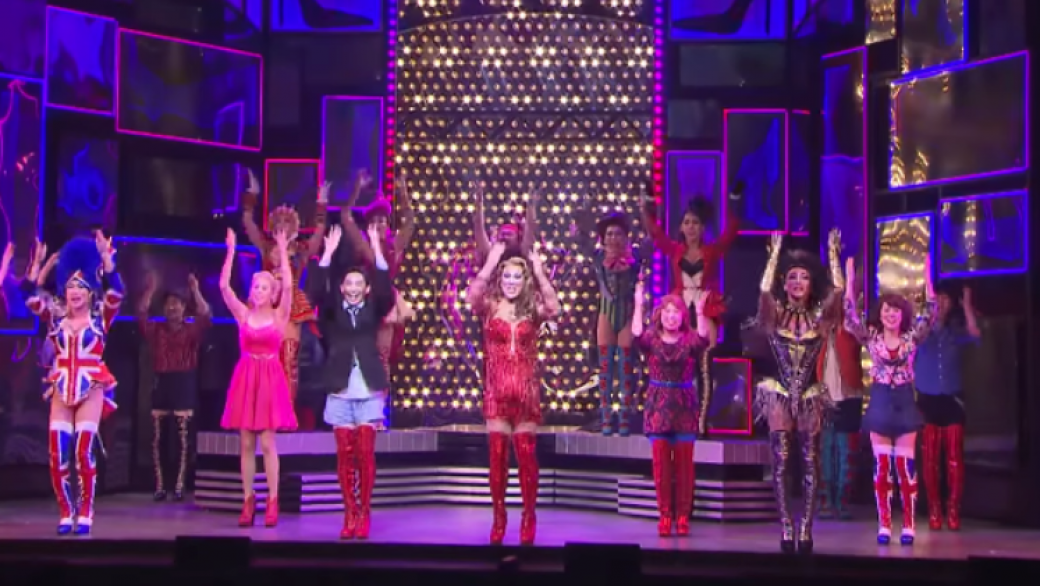The first time I saw Kinky Boots, I left the cinema depressed.
Not that it’s a depressing story. No, it’s the antithesis of a depressing story. It’s all triumph and overcoming obstacles and saving the village employees of the Price shoe company from redundancy, unemployment and impoverishment, led by the tenacity and clever shoe-designing skills of the imperious drag queen Lola, and the perseverance of the hapless and woefully betrothed Charlie, the great-great-grandson of the original Mr Price.
And while the drag-queen-as-saviour trope is a tired one, tired old tropes aren’t always a bad thing. I’m a bit of a tired old trope myself. Sometimes we want to know — even before the film begins — exactly how it’s going to end. We don’t always want surprises with our popcorn and soda. In that, the film was perfect.
(On a side note, Chiwetel Ejiofor was stellar as Lola. This was no ham-fisted, To Wong Foo caricature à la Snipes and Swayze. Ejiofor found complexity even where the script failed to offer it. And he sang his own numbers in delicious baritone.)
So how could such a rollicking good film, with its haute couture Milan runway climax, leave me feeling an ennui verging on melancholy? (If, as Atwood says, some Inuit people have 50 words for “snow,” I can have as many for “sad.”)
You first need to understand that it’s nearly impossible for actors to watch a film, play, Netflix series, or commercial without envisioning ourselves in its remount, adaptation, or sequel. It’s the unfounded hope deep at the core of our being that keeps us auditioning. That and mood-stabilizing drugs.
In this case, however, that vision was cut short by what I immediately realized would be the inexorable trajectory of this film. Everything about the movie screamed, “For the love of Rodgers and Hammerstein, turn me into a stage musical!”
And while that should have been a great revelation for a musical theatre sissy-boy like me, it was actually the cause of heartache. Because I could also foresee exactly how this future musical would end. The finale would be a Ziegfeld Follies-inspired number that would bring the entire cast on stage to embrace their inner drag queen in a celebratory song and dance. And every man, woman and child would be wearing the titular kinky boots. (Spoiler alert: I was right.)
I must here and now confess a shameful secret. I can’t walk — let alone dance — in kinky boots. High heels are my Achilles’ heel.
I have been unable to wear heels since an unfortunate evening in the late 1990s involving a pair of white vinyl go-go boots two sizes too big with Kleenex stuffed in the toes. After five hours of dancing, skipping from club to club with nary a taxi in sight, I was left hobbled. The now fused bones in my once pliant feet will no longer accommodate anything steeper than a one-inch heel. I am doomed to live my life in flats, disqualified from some of the juiciest roles a theatre fag could hope for.
Or so I thought at the time. I’m happy to say that my assumptions were not entirely correct. Kinky Boots has followed exactly the trajectory I envisaged. And while I was right about never being cast in that musical, I was wrong about the calamitous effects my rigid feet might have on my career. There may have been some career-related calamities, but none can be blamed on my feet. Except when I put them in my mouth.
I’ve had the good fortune to be cast in not one, but three remarkable drag roles. Granted, one of those was remarkable for all the wrong reasons and has been sponged from my resume if not memory. But of the other two, one was a deliciously villainous role, and the other was nothing short of drag nirvana.
And I got to do them all in flats.
Celebrate your own kink — in boots or flats — during Kinky Boots’ fleeting appearance at the Queen Elizabeth Theatre (630 Hamilton St) in Vancouver, Feb 7–12, 2017.

 Why you can trust Xtra
Why you can trust Xtra


